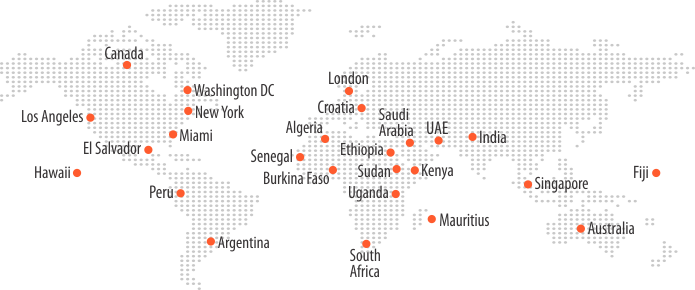How is Least Cost Routing Attracting Profits?

Routing plays a crucial role in wholesale VoIP termination. Different types of routing are the pre-defined sets of rules available in a specialized software called a routing engine. The method of routing selected can significantly impact the profitability and efficiency of any VoIP business.
The market size of wholesale carrier exchange for voice is to grow from $23,139.03 million in 2021 to $31,754.36 million by 2028 at a CGAR of 4.6%. With the rise in the number of carriers, it becomes essential to route calls through competitive gateways for maximum profits. Least Cost Routing is one of the routing mechanisms which is reliable and cost-effective. Let’s learn its basics, advantages, and challenges.
What is Least Cost Routing?
Least Cost Routing (LCR) is the process of analyzing, selecting, and directing the outbound voice traffic to the lowest-cost route carrier for the given destination.
For the wholesale termination of VoIP calls, operators can configure a VoIP Softswitch to intelligently choose a carrier that ensures reliable and speedy transmission of voice packets at the lowest price possible.
How does Least Cost Routing work?
A detailed description of the Least Cost Routing process is:
- Price lists or tariffs from carriers are loaded into a routing engine or external routing software.
- Code range normalization: The software converts all price lists to the same format because various suppliers use different codes (prefixes) for the same destination.
- A routing table is prepared that accommodates different prices for several millions of routes.
- When a switch gets a call, it sends a query to the routing engine for routing instructions.
- The routing engine calculates all routes dynamically and instructs the switch to route the call to the cheapest route first. This communication between telecom switch and routing engine occurs over protocols that support many advanced routing features, e.g., Session Initiation Protocol (SIP), Open Settlement Protocol (OSP), and E.164 Number Mapping (ENUM) protocol.
- If the route fails, the switch tries the next cheapest route and repeats until the call is terminated. The Least Cost Routing process is usually completed within a few milliseconds.
Why Implementing Least Cost Routing Solution, a Good Idea?
For decades, Least Cost Routing was done by manually exporting the routing table to a telephone switch or Private Branch Exchange (PBX). This old practice suffered from limitations of legacy switches that took hours to handle the heavy traffic load.
Today, the dynamic Least Cost Routing models use routing engines and software running on external servers with sufficient Random Access Memory (RAM) to host tens of millions of routes. Wholesale VoIP termination providers can leverage these entirely automated Least Cost Routing solutions to reap the following advantages:
Quick and Easy Implementation
Modern Least Cost Routing solutions can be implemented easily via secure access to the cloud-based platform. They function over SIP interconnection, allowing efficient switch and routing engine communication. These platforms also establish route translation on the switch, eliminating the need to manage complex translations separately on the operator’s network.
Class 4 Softswitch is one solution that manages wholesale termination of long-distance and international calls. It is a software-based device in a VoIP network with an in-built Least Cost Routing feature that can be activated quickly with a simple configuration.
Optimized Call Quality with QoS Reporting
Least Cost Routing configuration also considers the latency, call quality, and dropped calls to select the most efficient route. The Least Cost Routing part of the software solution incorporates call logging and QoS reporting that helps improve system performance.
These tools provide graphic and summary reports about whether the system is being under or over-utilized. The Least Cost Routing feature monitors traffic routes, volumes, price schedule, and peak/slump patterns so that providers can make smarter decisions to optimize the routing process.
Maximized Profits
Least Cost Routing enables automated and intelligent call route selection with the least point-of-presence (POP). Thus, it eliminates the fees associated with unwanted POP. For long-distance wholesale VoIP termination, some Least Cost Routing solutions specifically comprise tariffs for various routes passing through international boundaries and exchanges to pick the least expensive route. Ultimately, Least Cost Routing attracts profitability by optimizing the usage of competitive and affordable carriers.
Least Cost Routing Challenges
Routing Table Size
The number of dial codes varies depending on different routing guides. In seven-digit routing based on 1000 block partition, there are 644,327 dial codes. Whereas, in the routing based on six-digit NPA-NXX blocks, there are only 166,431 dial codes.
Translation occurs when a dial code matches the destination IP address. Even a basic optimized Least Cost Routing table has more than a million translations. So, the more dial codes, the more complicated and more extensive the routing table. The dynamically built routing tables are not affected by the size as the routes are calculated on the fly.
Number Portability Correction
Least Cost Routing must be used with a particular mobile number portability (MNP) function to locate and correctly find routes to the ported numbers. Without MNP, Least Cost Routing will try to find the most inexpensive route based on the dialed number, which may not connect to the desired recipient. Also, this often routes calls to carriers with higher route prices.
Limited Route Capacity
Mostly in wholesale VoIP termination, a specific route has its capacity. In such cases, only a certain number of simultaneous calls can be sent to the selected carrier for the destination. The calls above that limit will be dropped with an error code.
The Least Cost Routing engine must know the capacity limits to prevent route carriers from spamming and overloading. VoIP Softswitches can solve this problem with a simple configuration that will remove the routes that have reached their limits each time it calculates the routing table.
Ramp-up your Profits and QoS Using a Smart & Dynamic Routing Manager
Given the advantages of Least Cost Routing and the ease of its implementation in cloud-based solutions, there is little reason to ignore its potential for service providers. It makes carrier exchange for voice profitable and eliminates the headaches of high-traffic phone systems like poor signal quality and call drops.
Bankai Group’s intelligent Least Cost Routing mechanism helps carriers and operators gain maximum profits while ensuring top-quality routes for voice termination.
Related Posts
VoIP Call Drops: 5 Popular Ways to Deal with Them
Decoding the Myths of VoIP Call Quality






